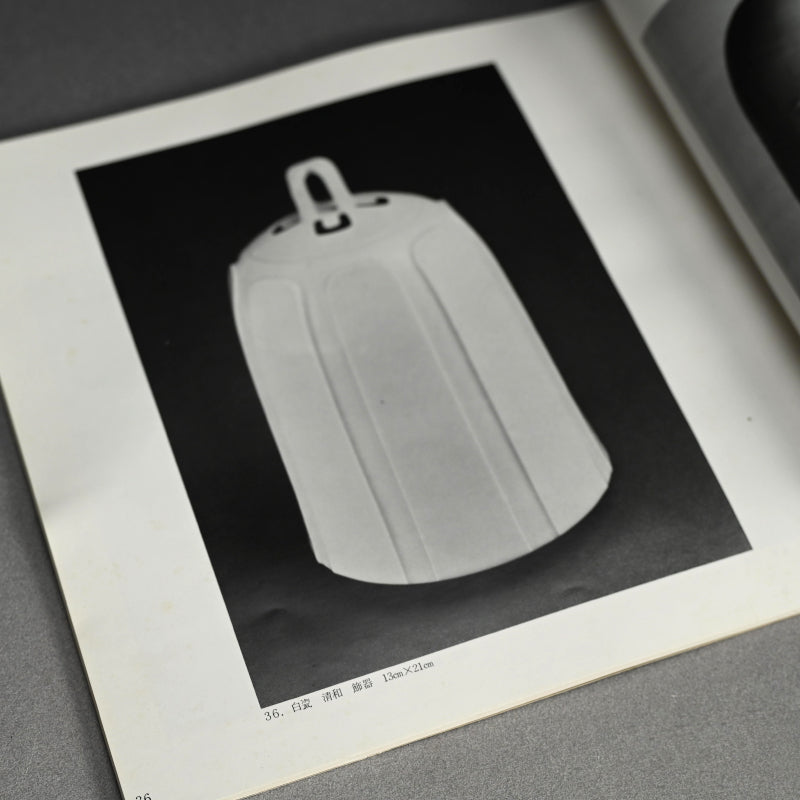Exquisite Contemporary Porcelain Koro ー松本 為佐視 “白瓷清和 飾器”
Exquisite Contemporary Porcelain Koro ー松本 為佐視 “白瓷清和 飾器”
Item Code: MC1475
Couldn't load pickup availability
An exquisite architectural form by Matsumoto Isami enclosed in the original signed wooden box titled Hakuji Seiwa Shoki. It comes with both a white porcelain lid, as well as a silvered lid by metal artist Endo Choei. It is published in the catalog: Matsumoto Isami Togeiten from 1981. It is 13.5 cm (5-1/2 inches) diameter, 21 cm (8-1/2 inches) tall with the porcelain lid, 22.5 cm (9 inches) tall with the silver lid.
Matsumoto Isami was born in the Higashiyama district of Kyoto in 1931, and trained under his father in design and the complexities of Seiji and Hakuji pottery. In 1954 he took the Mayors Prize in the Kyo-Ten (Kyoto City Art Exhibition), and was accepted into the Nitten the following year. He has been repeatedly awarded at both those shows, as well as the Gendai Kogei Ten (Modern Crafts Exhibition) among many others. Matsumoto is best known for exquisitely thin, translucent white-bodied wares and sky-blue glazes that recall Song-dynasty celadon and Ru ware; he often combines this refined ground with low-relief decorative carving and subtle applied motifs. Over decades Matsumoto’s works have appeared in major juried shows (including Nitten and the Modern Crafts exhibitions) and have won municipal and press awards; and his work is held in the collection of the Spencer Art Museum.
Endo Choei (b. 1927, Fukushima Prefecture) is a metalwork artist who has been active from the Showa era through to the Reiwa period. He studied under the distinguished metal artist Tomioka Yoshiyuki (Cho Sabimyo) and established his career through the Nitten, where he was awarded the exhibition’s highest honor, the Hokuto Prize. His work was first selected for the Kofukai Exhibition in 1957, the same year he debuted at the Nitten. In 1963 he gained recognition at the inaugural Contemporary Crafts Exhibition, and later that year received the Hokuto Prize at the 11th Nitten. He continued to garner distinction throughout his career, including the Special Selection at the 3rd Reorganized Nitten in 1972, the Members’ Prize at the 12th Nitten in 1981, the Prime Minister’s Award at the 15th Nitten in 1984, and the Minister of Education Award at the 9th Japan New Crafts Exhibition in 1988. Through these achievements, Endo secured a lasting place among the foremost Japanese metalwork artists of the postwar period.
Share


































